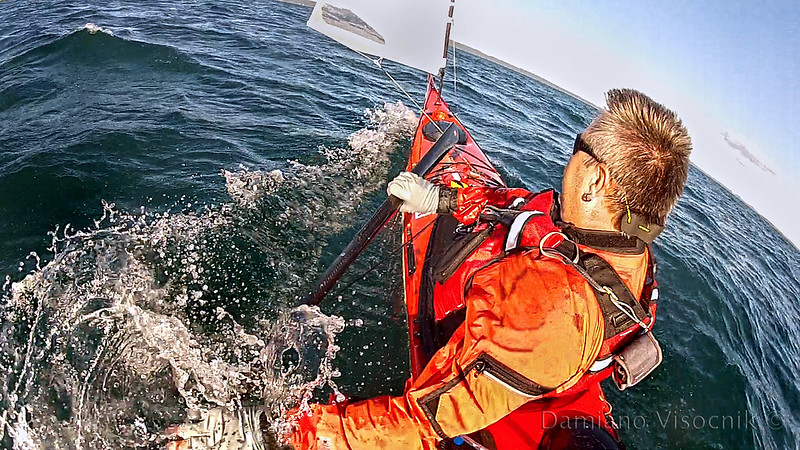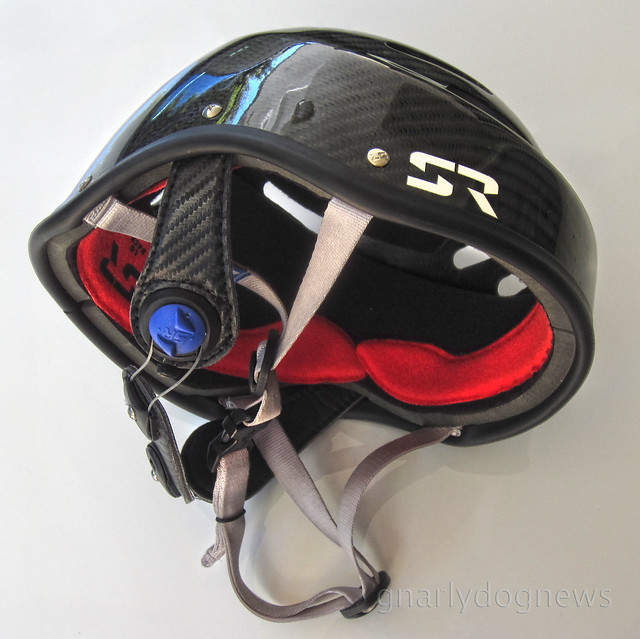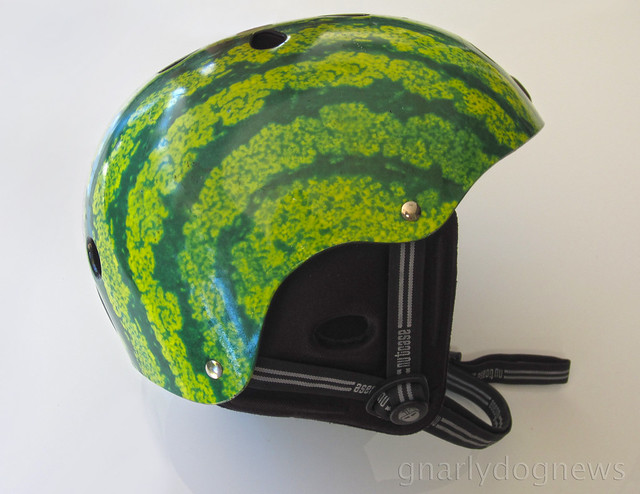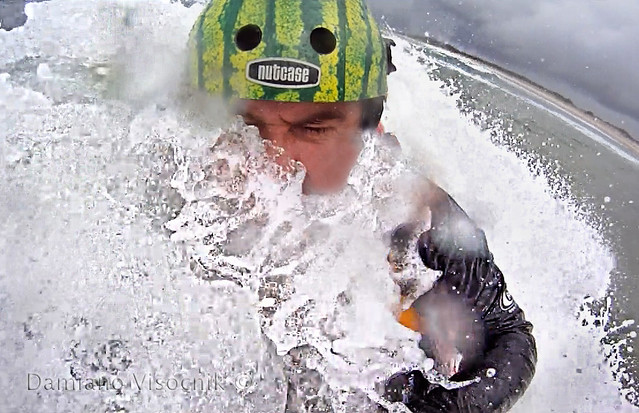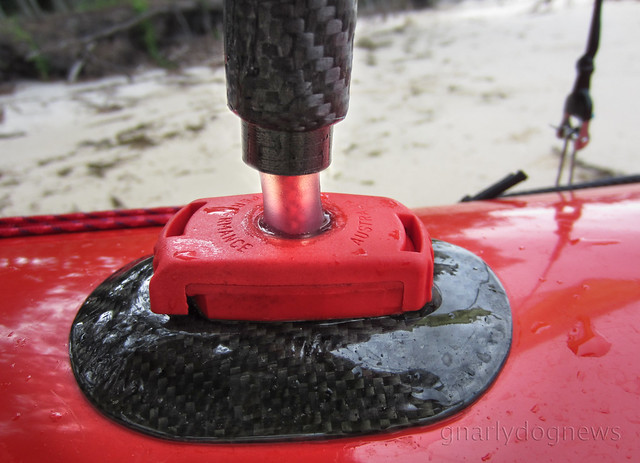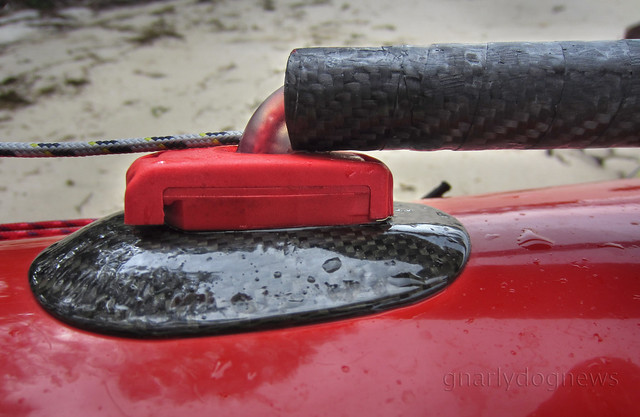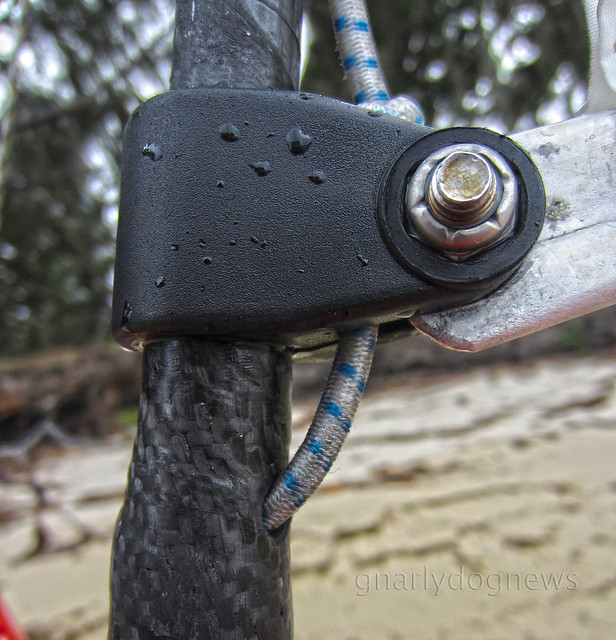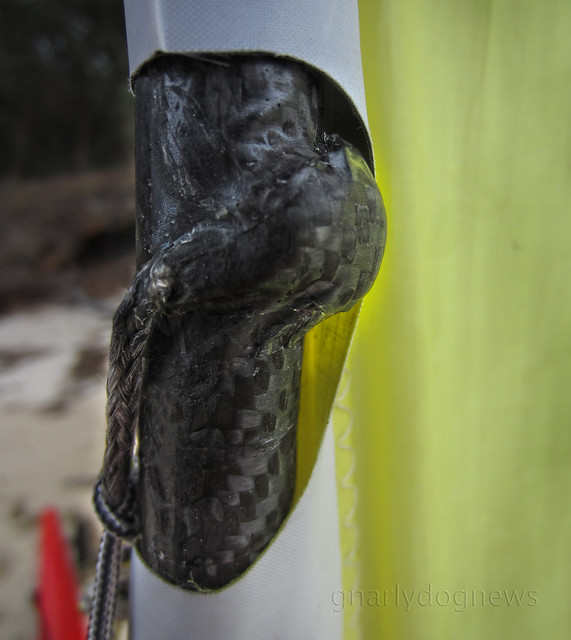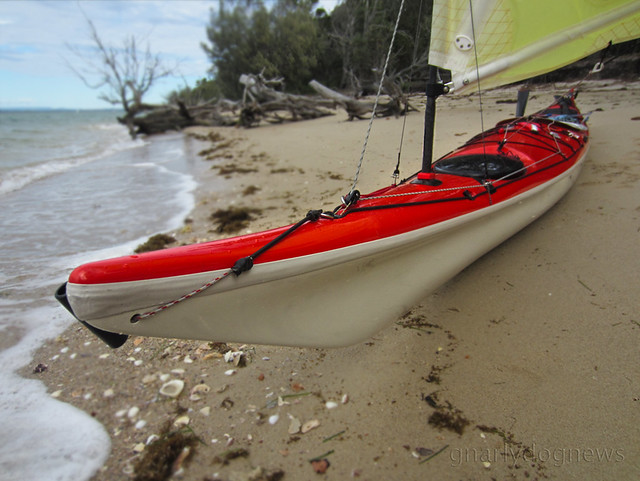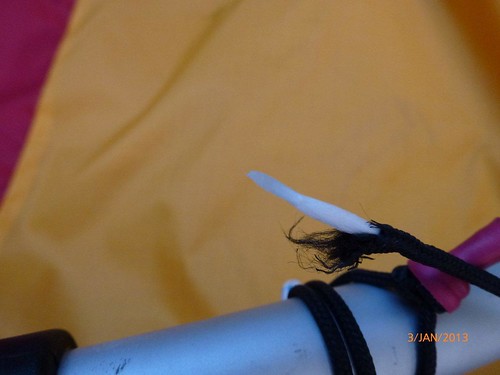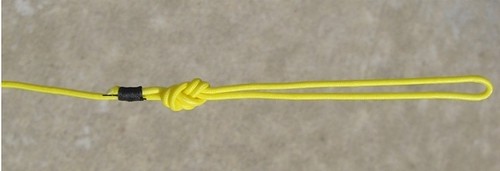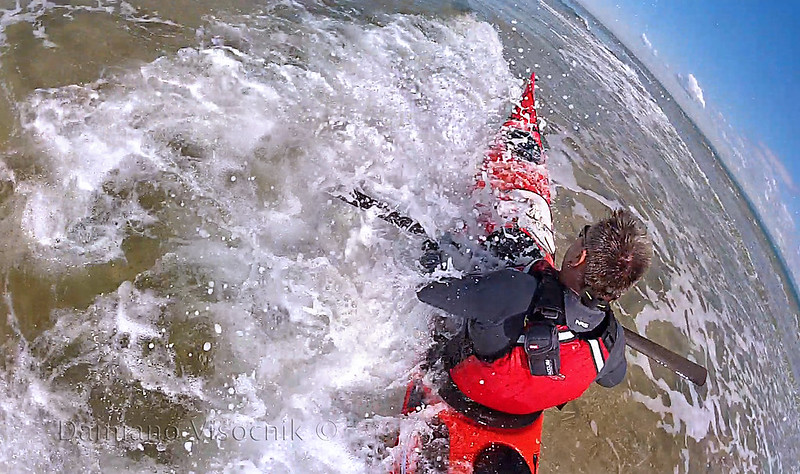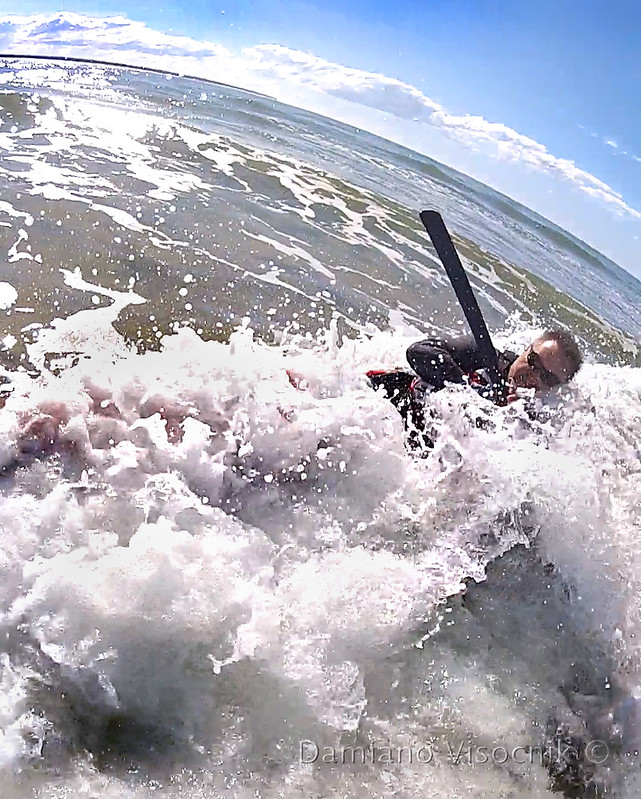Throughout history owners of all kind of boats have been naming her (yep, apparently boats are female... alluding at the changing moods? :-) with captivating, suggestive and exotic names.
Not sure if all paddlers share my attachment to a kayak but I feel being part of "her".
Is it the tight confined space that almost wears my body or is it the medium to deliver so much pure enjoyment that personifies an inanimate object made from fibreglass and resin?
Nevertheless I have named all my kayaks even if our "love" was brief at times.
From "Wet Dream" (a name almost R rated) to Kadzait there have been 14 "girls" in my shed...
I think it's more personal to have a name to refer to, instead of the model that the manufacturer gave her (at one stage I had two of the same model).
I like to display the name of my kayak on the bow, just under the seam line.
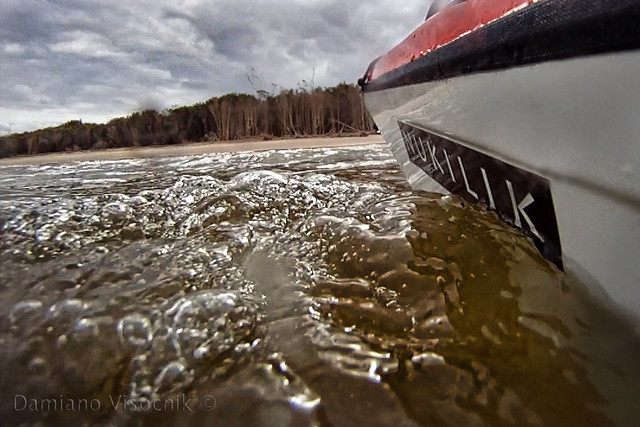
In the past I have come up with the logo for the name myself; using the imagination and electronic tools I would fashion graphics that would work on a sea kayak.
My designs have been so far monochrome; I would cut the logo out of cast vinyl and apply it to the gel coat.
Self adhesive cast vinyl is used for sign making and I would source mine from a local supplier but "flea Bay" seems to be a good source too.
I would trace the logo over the vinyl and with a very sharp hobby knife I would neatly cut out the desired shape. I limit my designs to be rather simple with few pointy edges and no fine lines. A cut-out vinyl sticker needs to have some body if used on the bow of a sea kayak or peeling of the material will occur.

I used clear vinyl to cover the complex shape of this logo
Recently I have had the urge to spice-up a bit my logos and with the recent purchase of (yet) another kayak I held back for a while. I could design my own logo in full color, maybe even with a drop shadow or something but the quotes I got to print a one-off were rather expensive.
Then I stumbled across Kayak ID, a guy that specializes in making just the very thing I wanted: logos for kayaks in "airbrush" look.
On his website he offers a very simple way to design your own logo in a few different styles.
I asked Bob for a sample and he was happy to supply me one, with exact instructions on how to apply it without messing up.
The decal took a while to make and ship (California based company) but it was delivered in a very protective stiff cardboard envelop to prevent shipping damage.
Cleaned up my kayak as recommended and carefully applied the decal.
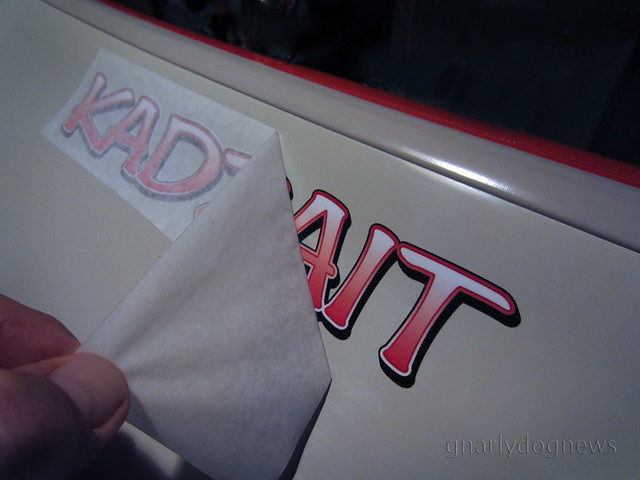
I think that these graphics look a lot more professional than my amateur efforts.
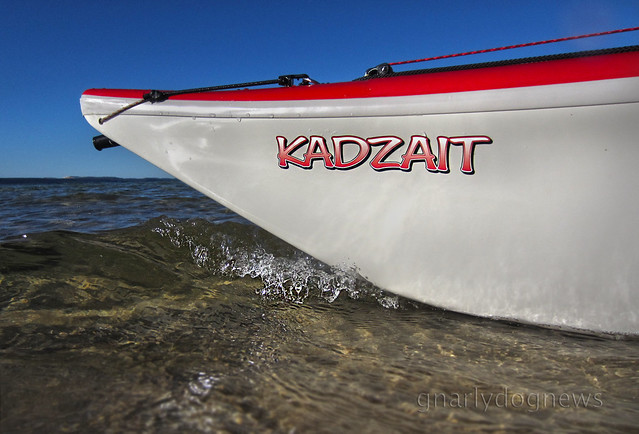
.

